Brief Notes on Days One and Two at Transitio_MX, by Eduardo Navas
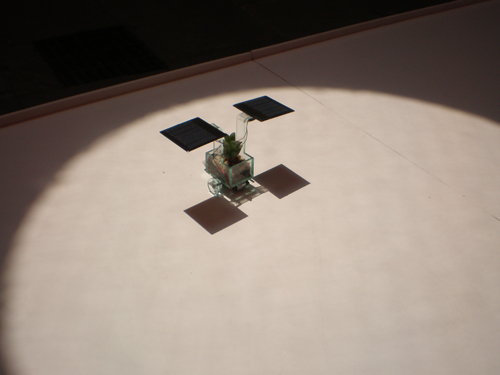
Buscando El Sol (Searching for the Sun), 2009, by Gilberto Esparza, Mexico. Part of Machiko Kusahara’s selection under device art. A small robot moves in a somewhat straight line; when it reaches the edge of the sun spot, it turns around to begin again in another direction.
——
The opening for the third biennale of Transitio_MX enjoyed an overwhelming attendance. It took place at the Cenart, where Centro Multimedia is based. About three thousand people were expected, and it seemed that all of them showed up. For ten days the festival will offer openings of exhibits, workshops, and concerts that take place in different cultural venues throughout the city.
The official opening of the festival featured my co-curation with Machiko Kusahara, titled “non-places and device art.” Unlike the other four curating duos, we opted to choose work independently that would be placed together in the gallery. In this way letting our focus on non places (my own) and on device art (Kusahara’s) inform each other.
In what follows I share some pictures with very brief descriptions for the first two days (similar to the description on Esparza’s work above). I will write a more extensive reflection once the festival is over.
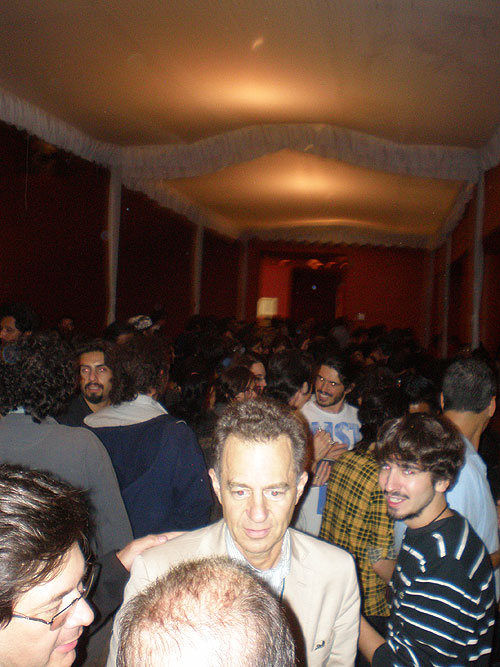
The VIP lounge where artists, curators and special guests were treated to drinks.
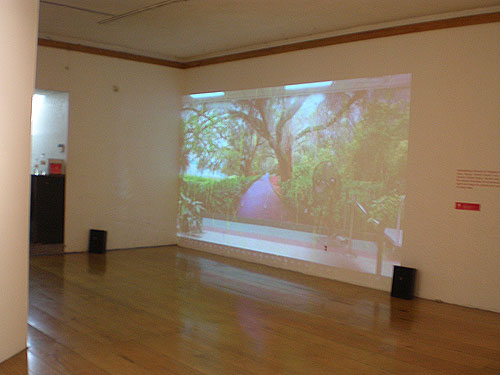
Anemophilous Formula for Computer Art, 2007, by Joelle Dietrick and Owen Mundy. One of my five selections. It consists of a wall projection of Tallahassee’s airport lounge, which hosts a wall size photographic reproduction of Mcklay Gardens. The city is often bombarded with pollen during the month of March. The airport lounge offers a reference of nature in an artificial space. Under the concept of non-places, which was my curatorial thematic, this work was placed in Centro Multimedia’s hallway where people constantly walked, to emphasize the use of the original image in a “non-place.”
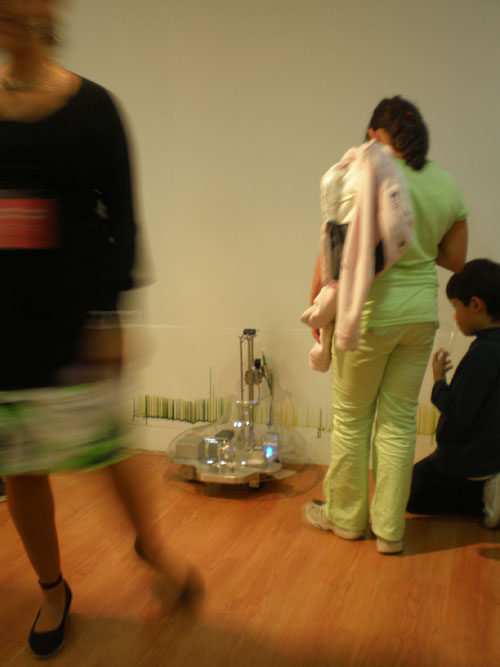
Translator II: Grower, 2004-06 by Sabrina Raaf is also part of my selection. It consists of an interactive robot that responds to the level of carbon dioxide in the room. Quite a popular piece in the exhibit; some visitors, upon learning about the work, exhale in front of the sensor to make the lines as long as possible
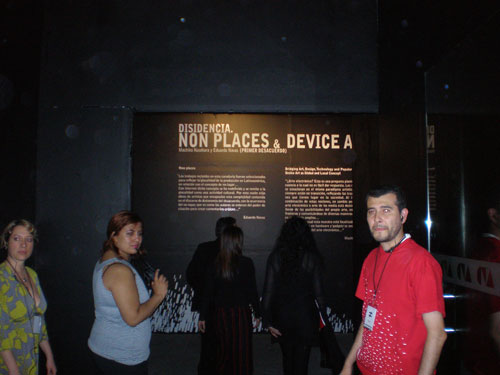
Entrance to Carlos Rosas’s installation titled I think I got Ikea’d.
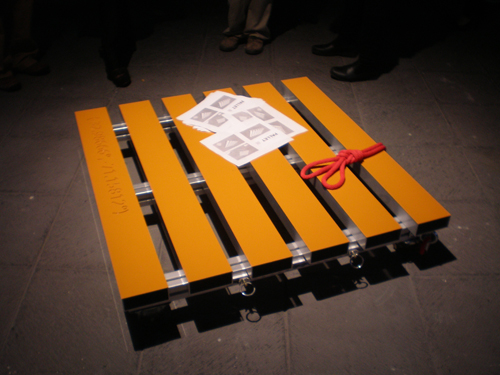
Detail of Rosas’s installation, I think I got Ikea’d, also part of my selection. An ongoing set of paintings developed based on GPS locations. The coordinates are systematically given a monochromatic color specific to the location, which is then given to a paint mixer to create a custom color. In terms of non-place this work is contextualized to contemplate how abstraction is a political process.
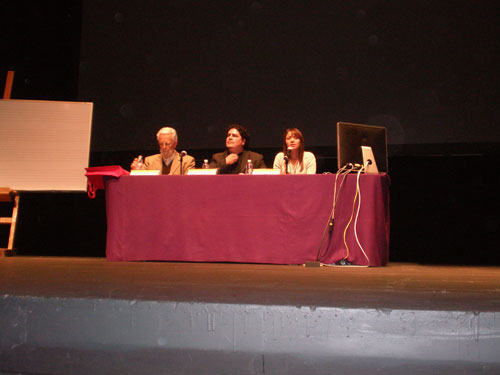
Above from left to right, Enrique Dussel, Pedro Enrique Bustamante and Karla Villegas.
The second day began with the inauguration of the symposium. Enrique Dussel, a well respected philosopher who writes on aesthetics and politics in globalization, was the first speaker. He gave a brief, yet in-depth history of modernism and how it should be reconsidered as part of other histories. While this may appear to be a recognizable proposition by post-colonial studies, what is specific to his lecture is that he proposed the term “transmodernism” as a constructive alternative to postmodernism. For Dussel the latter implies a non-western approach to global cultural activity. With transmodernism Dussel proposed that people around the world should take from and work with modernism, but with autonomy; that is by taking from modernism what they decide to work with according to their own histories and cultures, rather than allowing western thought to be imposed.
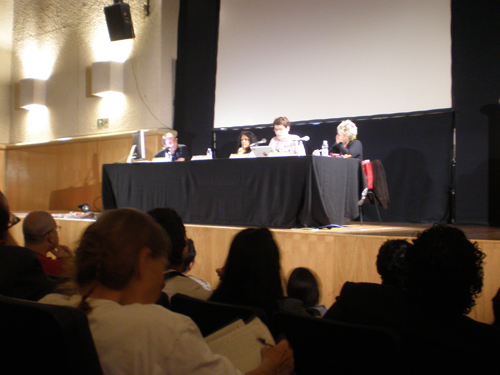
The symposium continued with a panel that included Paul Sibilia, César Martinez y Magnus Eriksson, with moderator Maris Bustamante. As much as I wanted to stay and listen to the panel, I was taken away as I had to attend to curatorial details. I however include a note here here because I am fond of the panelists’ research.

The opening of Bifurcaciones Sonoras at Fonoteca.
The exhibit and series of experimental electronic concerts opened at Fonoteca. “Bifurcaciones Sonoras” (Sound Bifurcations) was curated by Rodrigo Sigal and Arcángel Constantini as the second disagreement.
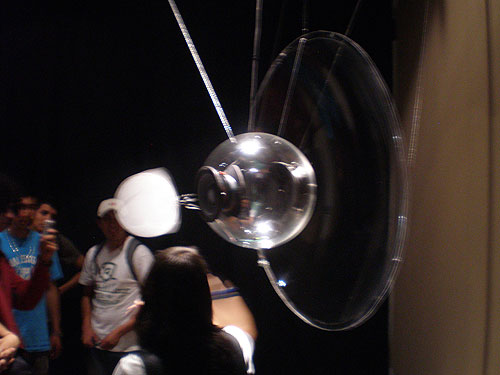
Instrumento Sonoro de Experiencia y Composición Espontanea (Sound Instrument of Spontaneous Composition and Experience), 2009, by Gerardo Garcia de la Garza. The sound emitted depends on a sensor that measures the distance of a person from the object. There are three objects in this installation.








